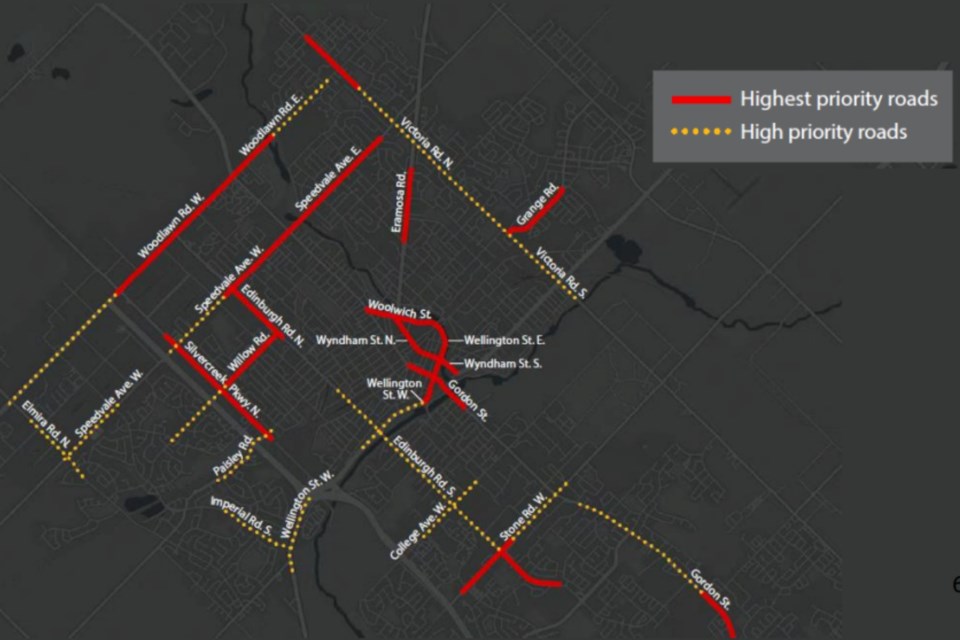Two years after the first batch of automated speed enforcement cameras (ASEs) started issuing tickets in Guelph, the program is set to triple in size, expanding beyond school zones and featuring several permanent locations.
The new cameras, taking the city from four to 12, are set to come online in August. No planned locations have been revealed at this point.
“Staff have determined that the presence of ASE cameras encouraged a positive change in drivers’ behaviour, resulting in an average speed reduction of 20 per cent or 9 km/h,” states a staff report heading to council’s committee of the whole meeting on March 4.
In that report, council is urged to consider a proposed new community safety zone policy and the creation of several new community safety zones (CSZs) – a mandatory requirement for ASE locations – and revise the city’s traffic bylaw “in preparation for future automated enforcement programs.”
The ASE initiative, which sees tickets issued to the registered owner of vehicles caught speeding, is designed to be revenue-neutral, staff note. ASE-generated tickets don’t come with licence demerit points.
Beginning Aug. 1, city officials will add four ASEs to be rotated through eight community safety zones every six months, along with four installed at permanent locations considered a high risk for serious injury collisions.
Specific locations won’t be announced until after formal council approval of the recommended policy changes involving community safety zones, Steve Anderson, the city’s manager of transportation engineering, told GuelphToday via email.
With the committee of the whole meeting set for March 4, council will likely consider ratification of whatever decision it makes that day during its March 25 meeting.
“It is recommended that the CSZ designation encompass all primary and secondary schools, post-secondary education centres, major health centres and hospitals, as well as roads identified as having a high risk of serious injuries and fatalities due to vehicle collision according to the high-risk network,” the staff report explains, noting council is being asked to approve the “first municipal high-risk network in Canada.”

The existing four will continue to be rotated through elementary school zones every four months, as has been done since the program launched in August of 2023.
As noted in the report, there were 89 serious-injury and 12 fatal collisions on Guelph roads between 2018 and 2022, along with 1,430 that resulted in injury.
“All injuries and fatalities due to collisions have decreased for drivers but have not shown the same reduction for other road users. While only 12 per cent of Guelph’s residents walk, bike, or use motorcycles for their daily commute, these modes account for 63 per cent of all serious injuries and deaths that occurred between 2018 and 2022,” the report notes.
Seventy-two per cent of all Guelph collisions occur at intersections, it continues. Half of all injuries to pedestrians occurred while a driver attempted to turn left.
The deadline to register as a delegate or make a written submission for the March 4 committee of the whole meeting is Feb. 28 at 10 a.m. To register, visit guelph.ca/delegation, call 519-837-5603 or email [email protected].
